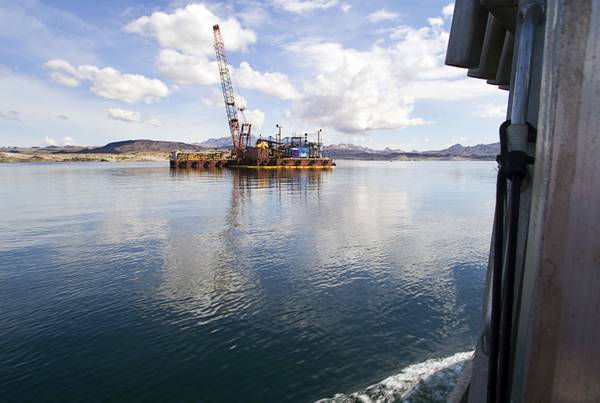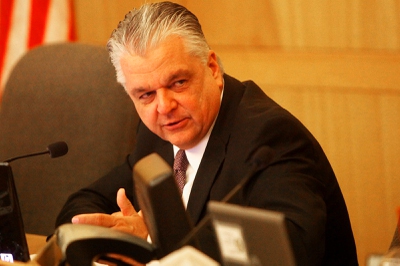Related
Sun Archives
Map of Lake Mead National Recreation Area
Next spring, water bills will rise to help pay the Southern Nevada Water Authority’s mounting debt used to fund some $3.3 billion in pumps, pipes and intakes installed over the past several years.
The fee, which comes on top of other recent increases, is needed because the old way of paying off water utility debt — connection fees paid by developers — has dried up in the recession. Consider that in fiscal year 2005-06, the Water Authority collected about $188 million in connection fees. This year, connection fees will total $11 million.
Given those numbers, few dispute the need for the increase. The debate will instead focus on the shape the fee increase takes.
Three proposals are being dissected by financial consultants Hobbs, Ong & Associates. The models worked up by the firm are dizzying in their complexity and numerous variables — including categories of water meters (there are 29); properties’ yearly and/or average monthly water usage; the impact of fee increases on business and homeowners; and how large an increase should be allowed.
Guy Hobbs, of the consulting firm, said the three fee options could be:
• a flat rate paid by all water users based on meter sizes — some homes, for instance, are connected to the water system with 5/8ths-inch pipes while others have 1-inch pipes;
• a variable rate-based water use;
• or a combination of the two.
No matter which fee is selected, there are bound to be unhappy ratepayers.
Here’s one potential issue: Assume a flat-rate increase of, say, $5 for like-metered homes. A residence that pays $150 a month for water would see only a 3 percent increase in its bill, while a residence that pays $12 a month would see a 42 percent increase.
A variable rate might be fairer to customers, but wouldn’t be as reliable a source of revenue for the Water Authority.
Here’s why: If, for example, the new fee is a certain amount per 1,000 gallons of water, a household using 10,000 gallons a month could cut back its water use to 9,000 gallons a month and lower its monthly bill, yielding less money for the Water Authority’s debt payments.
For the Water Authority, the flat rate — likely to be called a “reliability” charge — seems to be the better option because, fair or not, it is less likely to fluctuate.
The need for revenue is quickly growing. Early next year, the authority is expected to take on another $330 million in debt to finish a $700 million third “straw” — a deep intake tunnel into Lake Mead — begun a few years ago because of fears the current drought would lower lake levels to the point that the current intakes would stop functioning.
Meanwhile, the Water Authority’s annual debt payments keep increasing. They are expected to rise from $70 million in 2012 to $150 million in 2016.
When the fee increase takes effect, it will come on top of other rate increases homeowners and businesses have seen over the past three years. Southern Nevada’s various water districts — such as the Las Vegas Valley Water District, Henderson’s water utility or North Las Vegas’ — have raised rates a few times. In some instances, the increases were to pass along higher costs from the Water Authority, which acts as Southern Nevada’s water wholesaler. The individual districts and municipalities purchase that wholesale water, then charge customers for its use.
Steve Sisolak, Clark County commissioner and Water Authority board member, said he thinks the fee increase will either be the flat rate or variable rate, not a combination.
“It’s a ... huge potential problem,” he said. “And it has to be done fast.”
Sisolak, one of three county commissioners on the Water Authority board, demanded a fee study be done months ago. He said he wanted residents to be forewarned about upcoming increases because of the Water Authority’s request to finance more debt for the third straw.
Commissioner Tom Collins, also a Water Authority board member, said it’s too early to decide which of the fee proposals is best. In January, consultants will present payment models that will make the options clearer.
“You can’t do something until you have the tools on the table, and all the tools haven’t been presented yet,” he said. “We’ll be a little more concrete in January.”



Join the Discussion:
Check this out for a full explanation of our conversion to the LiveFyre commenting system and instructions on how to sign up for an account.
Full comments policy